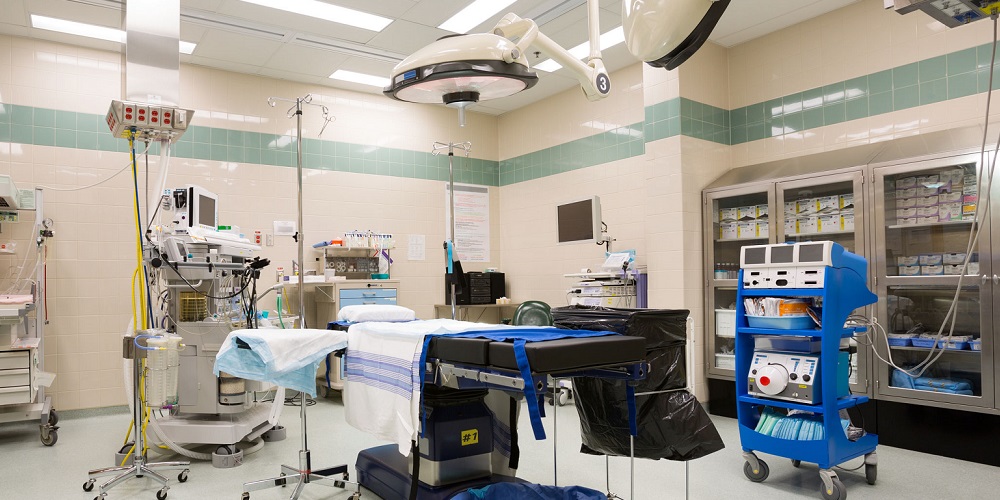Category: Healthcare

Demonstrating Chart Turnaround Success Gains Buy-in
Published:One of the participants in our Six Sigma Black Belt training program expressed concern about a lack of buy-in for Six Sigma in her organization. With little inquiry into the matter, we discovered that the means she adopted to gain buy-in were not apt for selling the philosophy. A lack of buy-in is most common […]
Read more »
Communication Strategies for Six Sigma Initiatives
Published:Making the decision to bring Six Sigma into an organization is the first step on a long journey. Although this decision has proven successful for a variety of industries (including healthcare), the best-laid plans may go awry if the focus is solely on the technical side, without considering the cultural and communication aspects of the […]
Read more »
Focus on Employees to Improve Healthcare Bottom Line
Published:In a recent speech to a local chapter of the American Society for Quality, the speaker stated that in a typical work site as many as 15 percent of the employees actively work to subvert the goals of the organization. Their activities obviously have a negative effect on the clients of the organization and the […]
Read more »
A Healthy Approach: Why McKesson Is a Best Place to Work
Published:“We’re the largest company you’ve never heard of.” That description of McKesson Corp. by Master Black Belt Bob Gooby underscores the relative anonymity of the organization that is the largest – and also the oldest – healthcare services company in the United States. McKesson has been providing medical products for more than 175 years, yet […]
Read more »
Aligning Six Sigma with Organizational Strategies
Published:Demonstrating clear alignment between Six Sigma projects and a healthcare organization’s strategic imperatives, vision or mission has been an elusive exercise for many organizations. Judging from a random sampling of web sites and hospital lobbies, most mission statements represent variations on a theme and relate to common issues such as clinical quality, cost management, service […]
Read more »
Outpatient Imaging Reports TAT Cut from 64 to 9 Hours
Published:Competition in the outpatient imaging center market is intense. New imaging centers are springing up everywhere. Faced with decreasing reimbursements, ever-changing technology and the expectation of spa-like atmospheres, how can an outpatient imaging center remain profitable? The answer lies with the customer. Having a pulse on the customer experience and continually eliciting and acting on […]
Read more »
Reducing Avoidable Cancellations on the Day of Surgery
Published:To accommodate growth in surgical service without adding resources, a Six Sigma team at Deaconess Hospital takes aim at reducing the number of same day surgical cancellations.
Read more »
Reducing Delayed Starts in Specials Lab with Six Sigma
Published:Special radiology procedures can be some of the most difficult to manage in healthcare. Their production relies on the chorus of a multidisciplinary team working within a limited time frame. Ancillary department performance can directly affect outcome performance for the unit. Defects such as missing orders, missing history and physicals or problems with patient flow […]
Read more »
Perception Versus Reality: Importance of Measurement
Published:At a high level, there is usually agreement on the big issues in any healthcare organization. Through observation and feedback alone, key stakeholders may realize there are problems with excessive wait time in the emergency department, or that the first surgical case of the day rarely starts on time, or that it is taking too […]
Read more »
Decatur Memorial: Better Than Could Be ‘Imagined’
Published:Since launching its Six Sigma program in 2001, Decatur Memorial Hospital has trained a team of Green Belts, Black Belts, Master Black Belts and change agents, and completed projects that have led to increased quality and efficiency across the organization. And despite being four years old, the program remains vital with a high energy level. […]
Read more »
Start Now with 10 Keys to Successful Transformation
Published:There is no need for another survey to confirm what healthcare professionals already know – healthcare delivery is overdue for a major renovation. New management models and strategies must be adopted that will: Enable quick, sustainable results around immediate issues. Equip teams with solid problem-solving skills and proven best practices. Empower the organization with a […]
Read more »
Making the Journey Toward Culture Change in Healthcare
Published:Recognition is growing among healthcare leaders of the need for a culture change within their organizations. Moving from recognition to reality, however, is more difficult. The problem lies in the perception – or misperception – of what a culture change actually entails. Culture change is not a program with a completion date, nor is it a quick […]
Read more »
Putting “Express” Back in Hospital’s ED Express Care
Published:At Providence Hospital in Detroit waiting times to see physicians in the emergency department (ED) ranged from 11 minutes to 4 hours. The hospital implemented Six Sigma and Lean to make an enormous improvement in its ED and express care program.
Read more »
Overcoming the Barriers to Change in Healthcare System
Published:Research has shown that 95 percent of diets fail over the long term. Oddly enough, various studies show that 60 to 80 percent of major change initiatives also fail. In both cases, it is certainly not for lack of good intentions. For a person who has been on a successful diet, it is frustrating to […]
Read more »
Breakthrough: Do Clinical Research the Six Sigma Way
Published:During the last two decades, process improvement was a dominant movement in the manufacturing industry. However, pharmaceutical and biopharmaceutical companies did not broadly recognize how breakthrough process improvement methods could be integrated with clinical research practices. Although Six Sigma is interdisciplinary, its internal structure and the nature of its interactions with other disciplines in clinical […]
Read more »
Six Sigma Convert Offers Views on Healthcare Leadership
Published:Remaining within a hospital management role for more than two years is an uncommon achievement today, but a resume with multiple job changes is not as detrimental as it used to be. A new organization, or even a new role, offers the advantages of learning new skills and discovering the contributions leaders can make.
Read more »
Six Sigma and Work-out Reduce Ambulance Diversions
Published:A recent study by the National Center for Health Statistics found that, on average, an ambulance in the United States is diverted every minute to another hospital due to emergency room overcrowding. The study underscores the fact that this is a nationwide problem, and that emergency department (ED) diversions often produce a negative chain reaction […]
Read more »
Six Sigma Improves Workflow in N-Medicine Department
Published:The nuclear medicine department located in the Ospedale Santa Croce e Carle in Cuneo, Italy, has always been recognized as a national and international reference site for its clinical compentencies and innovative facility design. When originally opened, the nuclear medicine department was structured to provide the best possible service to patients. This included a focus […]
Read more »
Achieving and Sustaining Improvement in Cardiac Medication
Published:More than 70 million Americans have some form of cardiovascular disease, including stroke, high blood pressure, congestive heart failure (CHF) and acute myocardial infarction (AMI). The numbers continue to rise as the population ages, and improving the timeliness and quality of cardiovascular care continues to be a critical area of focus for healthcare providers. Some […]
Read more »
Reduce and Optimize Hospital Noise with Six Sigma Tools
Published:A hospital must create a quiet, calm environment for patients by providing a physical setting conducive to recovery and an organizational culture that supports patients and families through the stresses imposed by illness, hospitalization, medical visits, healing and bereavement. To accomplish this hospital employees must identify internal and external noise factors – is it voices, […]
Read more »
Enabling Culture Change in Healthcare with Six Sigma
Published:After embarking on a Six Sigma journey, many organizations soon realize that one of the most significant benefits is also one of the most difficult to quantify. It cannot be measured in terms of “Z” scores or analyzed using a box plot. This benefit is the “people value” (no relation to p-value). It is the […]
Read more »
Healthcare Quality Initiatives: The Role of Leadership
Published:A distinguished panel of healthcare executives recently shared their thoughts on the importance of leaders taking an active and visible role in their organization’s quality initiatives. They also agreed on the need for organizations to develop the right management systems and structures to adequately support their quality efforts, measure outcomes and encourage accountability. Speaking on […]
Read more »
Hospital Project Reduces 'Bed Sores' to an Industry Low
Published:When a Houston hospital found it had a 12 percent incidence of pressure ulcers – exceeding the 7 percent national average – it put a team in place and launched a project to reduce the incidence of pressure ulcers by half within a nine-month period. By Senaida (Cindy) Garza, Veronica Okere, Jackson Igbinoba, Kristi Novosad […]
Read more »
Lean Fills Prescription for Change at Hospital Pharmacy
Published:The process improvement journey at Jordan Hospital took a large step forward last year when the organization was introduced to Lean Six Sigma concepts as part of a departmental optimization effort for its internal pharmacy.
Read more »